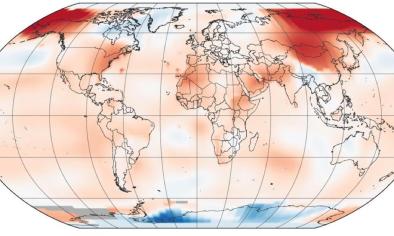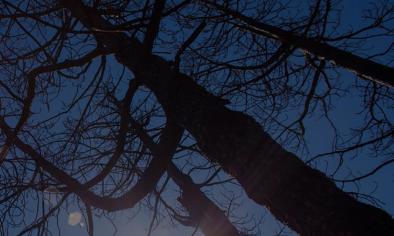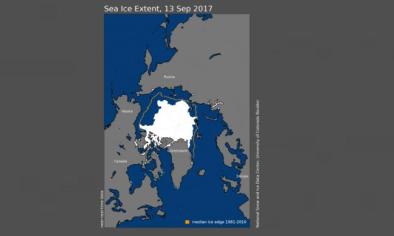Science Source
Snow, Water, Ice and Permafrost in the Arctic (SWIPA) 2017
Key findings
- The Arctic’s climate is shifting to a new state
- Climate change in the Arctic has continued at a rapid pace
- Changes will continue through at least mid-century, due to warming already locked into the climate system
- Substantial cuts in global greenhouse gas emissions now can stabilize impacts after mid-century
- Adaptation policies can reduce vulnerabilities
- Effective mitigation and adaptation policies require a solid understanding of Arctic climate change
Details of finding #2
- Arctic temperatures are rising faster than the global average. The Arctic was warmer from 2011 to 2015 than at any time since instrumental records began in around 1900, and has been warming more than twice as rapidly as the world as a whole for the past 50 years. January 2016 in the Arctic was 5°C warmer than the 1981–2010 average for the region, a full 2°C higher than the previous record set in 2008, and monthly mean temperatures in October through December 2016 were 6°C higher than average for these months. Sea temperatures are also increasing, both near the surface and in deeper water.
- The frequency of some extreme events is changing. Recent observations include a widespread decline in periods of extreme cold during both winter and summer, and increases in extreme warm periods in some areas, such as northern Alaska and northeastern Russia in autumn and spring
- The decline in sea ice continues, with variation from year to year. Sea ice thickness in the central Arctic Ocean declined by 65% over the period 1975–2012. Sea ice extent has varied widely in recent years, but continues a long-term downward trend. A record low minimum sea ice extent occurred in 2012 and a record low maximum sea ice extent occurred in 2016. Older ice that has survived multiple summers is rapidly disappearing; most sea ice in the Arctic is now ‘first year’ ice that grows in the autumn and winter but melts during the spring and summer. Except for the coldest northern regions of the Arctic Ocean, the average number of days with sea ice cover in the Arctic declined at a rate of 10–20 days per decade over the period 1979–2013, with some areas seeing much larger declines. Warm winds during the autumn of 2016 substantially delayed the formation of sea ice. Sea ice is becoming more mobile as its extent and thickness decrease, increasing ice-related hazards. More open water occurs in all months of the year compared with observations reported in 2011.
- The area and duration of snow cover are decreasing. Snow cover has continued to decline in the Arctic, with its annual duration decreasing by 2–4 days per decade. In recent years, June snow area in the North American and Eurasian Arctic has typically been about 50% below values observed before 2000.
- Permafrost warming continues. Near-surface permafrost in the High Arctic and other very cold areas has warmed by more than 0.5°C since 2007–2009, and the layer of the ground that thaws in summer has deepened in most areas where permafrost is monitored.
- The loss of land-based ice has accelerated in recent decades. Since at least 1972 the Arctic has been the dominant source of global sea-level rise. Seventy percent of the Arctic’s contribution to sea-level rise comes from Greenland, which on average lost 375 gigatons of ice per year—equivalent to a block of ice measuring 7.5 kilometers or 4.6 miles on all sides—from 2011 to 2014. This is close to twice the rate over the period 2003–2008.
- Freshwater storage in the Arctic Ocean has increased. Compared with the 1980–2000 average, the volume of freshwater in the upper layer of the Arctic Ocean has increased by 8,000 cubic kilometers, or more than 11%. This volume equals the combined annual discharge of the Amazon and Ganges rivers, and could— if it escapes the confines of the Arctic Ocean—affect circulation in the Nordic Seas and the North Atlantic.
- Ecosystems are changing. The decline in sea ice thickness and extent, along with changes in the timing of ice melt, are affecting marine ecosystems and biodiversity; changing the ranges of Arctic species; increasing the occurrence of algal blooms; leading to changes in diet among marine mammals; and altering predator-prey relationships, habitat uses, and migration patterns. Terrestrial ecosystems are feeling the effects of changes in precipitation, snow cover, and the frequency or severity of wildfires. The occurrence of rain-on-snow and winter thaw/refreezing events affects grazing animals such as caribou, reindeer, and muskox by creating an ice barrier over lichens and mosses. While many tundra regions have become greener over the past 30 years, reflecting an increase in plant growth and productivity, recent satellite data show shifts toward browning (indicating a decrease in plant cover and productivity) over large areas of the Arctic, particularly in Eurasia.
- Arctic climate trends affect carbon storage and emissions. New estimates indicate that Arctic soils hold about 50% of the world’s soil carbon. While thawing permafrost is expected to contribute significantly to future greenhouse gas emissions, the amount released over the past 60 years has been relatively small.
- The impacts of Arctic changes reach beyond the Arctic. In addition to the Arctic’s role in global sea-level rise and greenhouse gas emissions, the changes underway appear to be affecting weather patterns in lower latitudes, even influencing Southeast Asian monsoons.
Related Content
Headline

Nov 29, 2017 | Mashable
Earth heads for a top 5 warmest year as the Arctic heats up
Science Source
| Wiley Interdisciplinary Reviews: Climate Change
Amplified Arctic warming and mid‐latitude weather: new perspectives on emerging connections
Francis, Jennifer A., Vavrus et al
Headline

Nov 28, 2017 | Carbon Brief
State of the climate: 2017 shaping up to be warmest ‘non-El Niño’ year
Headline

Nov 28, 2017 | National Snow and Ice Data Center
Arctic sea ice at minimum extent


